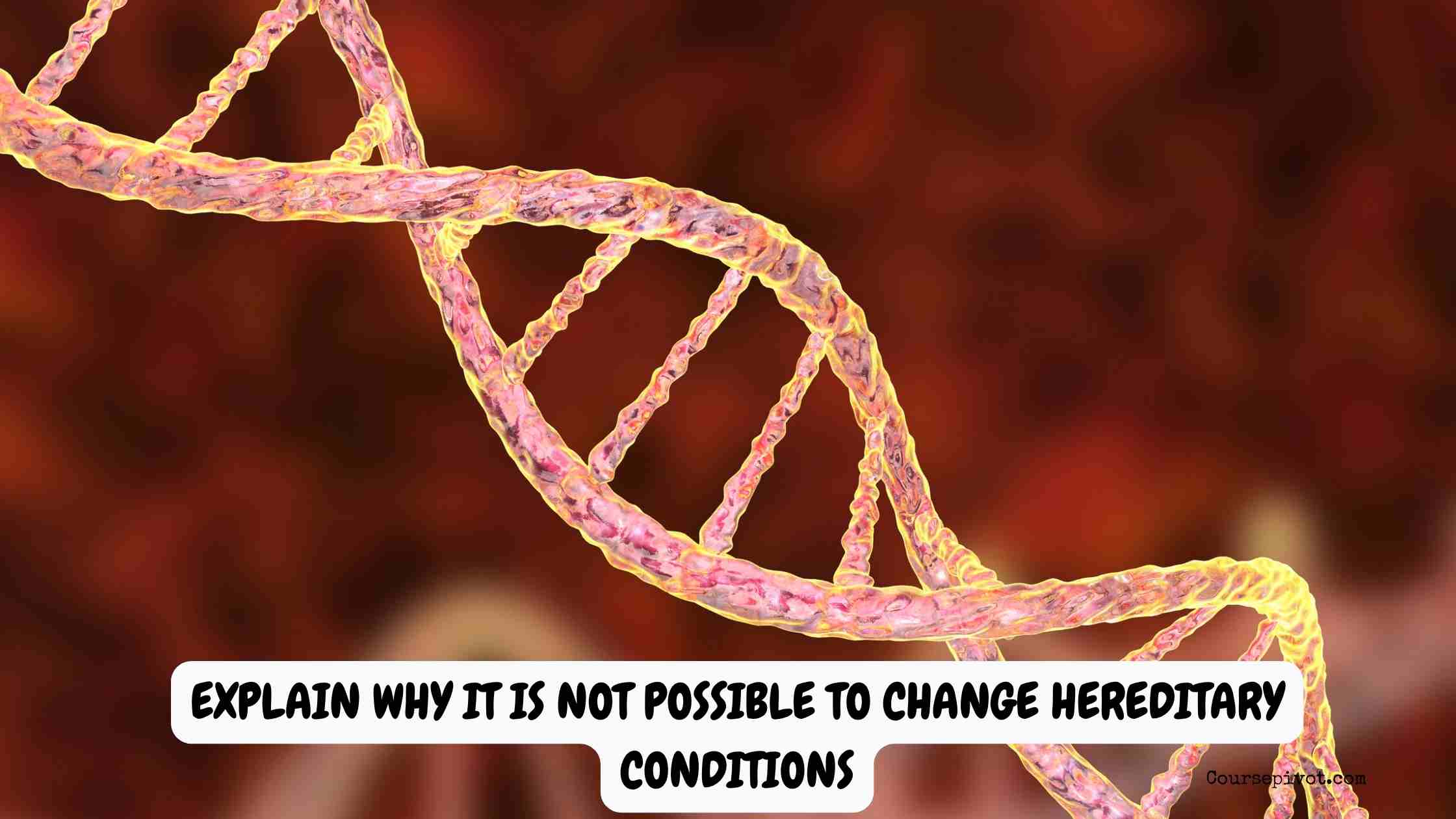
Why It Is Not Possible to Change Hereditary Conditions
Hereditary conditions shape lives in ways that can feel unchangeable. I’ve seen friends grapple with inherited health issues, wondering why science can’t rewrite their DNA. Understanding why it is not possible to change hereditary conditions clarifies the limits of biology and medicine. In this article, I’ll explore five key reasons why these conditions persist, drawn from my own research and reflections on genetics. These insights shed light on a complex topic. Let’s dive into why hereditary conditions cannot be altered.
Table of Contents
Ever wondered why some health issues seem set in stone? It’s not just chance—it’s rooted in biology. Ready to uncover five reasons why hereditary conditions stay fixed?
Genetics can feel like a locked door. I’ve been fascinated by how our DNA dictates so much. Let’s explore why changing hereditary conditions remains out of reach.
1. DNA Is Fixed at Conception
Your genetic code is set when sperm meets egg. This is a core reason why it is not possible to change hereditary conditions. I’ve learned DNA is like a permanent blueprint.
- Unique code. Your genes are determined at conception and don’t change.
- Inherited traits. Conditions like cystic fibrosis are coded in that DNA.
- Stable structure. DNA replicates faithfully in every cell.
Why can’t we rewrite DNA? It’s embedded in every cell from birth. Altering it entirely is beyond current science.
2. Hereditary Conditions Are Passed Through Genes
Genes carry instructions for health and traits. This is a key reason why hereditary conditions cannot be changed. I’ve seen families share conditions like sickle cell anemia.
- Parent to child. Faulty genes pass from one generation to the next.
- Dominant or recessive. Some conditions appear even with one copy of the gene.
- No natural fix. The body can’t correct these genetic errors.
Why do genes matter? They’re the source of hereditary issues. You can’t change what’s inherited without altering genes.
3. Current Gene Editing Is Limited
Gene-editing tools like CRISPR can’t fully erase hereditary conditions. This is a vital reason why it is not possible to change hereditary conditions. I’ve followed the promise and limits of this tech.
- Targeted fixes. CRISPR can edit specific genes, but not whole conditions.
- Complex diseases. Many conditions involve multiple genes or unknown factors.
- Risky outcomes. Editing can cause unintended mutations.
Why isn’t gene editing enough? It’s precise but narrow. Most hereditary conditions are too complex for a complete fix.
4. Conditions Are Often Systemic
Hereditary conditions affect multiple body systems from birth. This is a major reason why hereditary conditions cannot be changed. I’ve seen how deeply conditions like Huntington’s impact lives.
- Widespread effects. Diseases alter organs, tissues, or brain function.
- Early onset. Many conditions start before or at birth.
- No reset button. You can’t undo years of genetic influence.
Why is systemic impact a barrier? The body’s built on faulty genes. Reversing this would require rebuilding entire systems.
5. Ethical and Practical Constraints
Changing hereditary conditions faces moral and logistical hurdles. This is a critical reason why it is not possible to change hereditary conditions. I’ve thought about the debates surrounding genetic changes.
- Ethical concerns. Altering DNA raises questions about “designer babies.”
- Access issues. Treatments, if possible, would be costly and unequal.
- Long-term risks. Unknown effects could harm future generations.
Why do ethics matter? They limit how far science can go. Practical barriers make widespread change unrealistic.
- Read our blog on How Advances in DNA Technology Are Assisting the Medical Field
What’s Next for You
Grasping why it is not possible to change hereditary conditions brings clarity to a tough reality. I’ve been moved by stories of people living with these challenges, and science’s limits are humbling. These five reasons—fixed DNA, gene inheritance, limited editing, systemic effects, and ethical constraints—explain why hereditary conditions persist. While we can’t change them, we can manage and support those affected. Will you feel stuck by this, or seek ways to cope and thrive?
Here’s how to move forward:
- Learn about conditions. Research specific hereditary issues for better understanding.
- Explore treatments. Medications or therapies can manage symptoms.
- Seek support. Connect with communities or genetic counselors.
Hereditary conditions are unchangeable, but hope isn’t lost. Why hereditary conditions cannot be changed teaches us to focus on resilience. Start exploring options today to live well with what’s inherited.
Cite this article
You can copy and paste your preferred citation format below.
Martin, L. & Arquette, E.. (2025, May 30). Why It Is Not Possible to Change Hereditary Conditions. Coursepivot.com. https://coursepivot.com/blog/explain-why-it-is-not-possible-to-change-hereditary-conditions/



